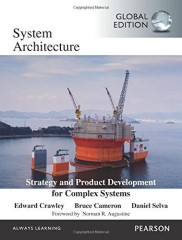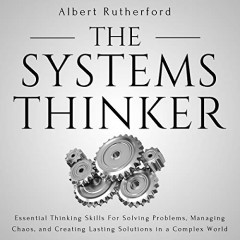In the ever-evolving landscape of project development, the ability to effectively manage changing requirements is a critical skill. A well-crafted requirements change management plan is the key to ensuring seamless transitions, minimising miscommunication, and maintaining project control. In this article, we will explore the essential elements of a successful requirements change management plan and provide you with actionable insights to navigate the complex world of changing project requirements.
Table of Contents
Understanding Requirements Change Management
In the dynamic realm of project development, change is not just inevitable—it is a constant. Requirements evolve due to various factors, such as technological advancements, market demands, stakeholder feedback, and unforeseen issues that arise during project execution. Understanding the intricacies of requirements change management is essential for navigating these changes effectively, ensuring project success, and minimizing potential disruptions.
The Significance of Requirements Change Management in Project Success
Projects begin with a set of defined requirements, outlining what needs to be achieved. However, as the project progresses, these requirements may need to be adjusted to reflect new insights, risks, or opportunities. Effective requirements change management serves as the structured process by which these adjustments are made, ensuring that the project remains aligned with its goals.
Without a robust change management plan, projects are susceptible to several risks:
| Risk | Description |
|---|---|
| Scope Creep | Uncontrolled changes can lead to an expansion of the project scope without corresponding adjustments in time, cost, or resources. |
| Budget Overruns | Changes made without proper evaluation and approval can result in unforeseen expenses. |
| Missed Deadlines | Unmanaged changes can disrupt timelines and delay project completion. |
A well-implemented change management strategy helps mitigate these risks by providing a controlled mechanism for assessing and integrating changes.
The Pivotal Role of a Change Control Board in Governing Change Requests
Central to effective requirements change management is the Change Control Board (CCB). This designated group of stakeholders acts as the governing body responsible for reviewing, approving, or rejecting change requests. The CCB ensures that each proposed change aligns with the broader project objectives and that its impacts are thoroughly evaluated.
Key functions of the Change Control Board include:
- Evaluation: Assessing the necessity, feasibility, and impact of each change request.
- Decision Making: Approving changes based on their merit and alignment with project goals.
- Prioritization: Determining the urgency and priority of changes to manage project scope and resources effectively.
By implementing a structured decision-making process, the CCB helps maintain project control and ensures changes are made judiciously.
A Holistic View of the Iterative Steps Involved in Requirements Change Management
Effective requirements change management is an iterative process. It involves several critical steps, each aimed at ensuring that changes are thoughtfully considered and seamlessly integrated into the project. These steps include:
| Step | Description |
|---|---|
| Identification | Recognizing the need for a change, often triggered by stakeholder feedback, risk assessments, or emerging opportunities. |
| Evaluation | Thoroughly assessing the proposed change’s feasibility, impact on project scope, timeline, budget, and resource allocation. |
| Approval | Safeguarding that only well-justified changes receive approval through the structured decision-making process of the Change Control Board (CCB). |
| Planning | Developing a detailed implementation plan that outlines the steps, goals, resources, and budget considerations for executing the change. |
| Execution | Implementing the change according to the plan while monitoring progress and maintaining open communication channels. |
| Verification | Conducting a post-implementation review to verify the change’s effectiveness and stability within the project context. |
| Documentation | Updating all project documentation to reflect changes, maintaining a comprehensive changelog for transparency and accountability. |
| Feedback | Gathering insights and perspectives from stakeholders to inform future change management practices and foster continuous improvement. |
By following these iterative steps, project teams can systematically manage changes, ensuring that they contribute positively to project outcomes rather than becoming sources of disruption.

Essential Elements of a Requirements Change Management Plan
Effective requirements change management is built upon several key components that ensure changes are handled systematically and efficiently. Each element serves a unique purpose, contributing to seamless transitions, minimized miscommunication, and maintained project control. Below, we delve into the essential elements of a robust requirements change management plan.
Roles and Responsibilities
A clear definition of roles and responsibilities is the cornerstone of effective change management. Each individual involved in the change process must understand their duties to foster collaboration and streamline communication. Key roles typically include:
- Project Manager: Oversees the entire change management process, ensures alignment with project goals, and maintains communication among all stakeholders.
- Change Control Board (CCB) Members: Evaluate and approve or reject change requests based on their impact on the project.
- Change Requestor: Individuals or groups who identify the need for a change and formally submit change requests.
- Implementation Team: Responsible for executing approved changes according to the defined plan and ensuring integration with existing project elements.
By clearly defining these roles, organizations lay the groundwork for effective collaboration and ensure that everyone knows their specific responsibilities in the change management process.
The Change Control Board (CCB)
The Change Control Board is a pivotal element in governing change requests. This structured group is responsible for making informed decisions about which changes to implement, ensuring that they align with project goals and constraints. The CCB typically includes:
- Key Stakeholders: Individuals with a vested interest in the project’s success and the authority to make strategic decisions.
- Subject Matter Experts (SMEs): Provide technical insights and evaluate the feasibility and impact of proposed changes.
- Project Managers: Ensure that changes are aligned with project scope, budget, and timeline.
The CCB’s structured decision-making process includes evaluating change requests for their necessity, feasibility, and impact. This ensures that only well-justified changes are approved, maintaining project integrity.
Change Request Form
A standardized Change Request Form is indispensable for documenting change requests accurately and consistently. This form captures crucial details, such as:
- Change Description: A clear and concise explanation of the proposed change.
- Rationale: The reasons behind the change and its anticipated benefits.
- Impact Analysis: An assessment of how the change will affect project scope, timeline, budget, and resources.
- Proposed Solution: Suggested methods for implementing the change, including any alternatives.
Using a standardized form ensures that all necessary information is captured and evaluated, facilitating informed decision-making by the CCB and other stakeholders.
Comprehensive Change Management Plan
A comprehensive change management plan encompasses all the above elements and integrates them into a cohesive strategy. This plan should outline:
- Change Management Objectives: Clear goals and objectives for managing change within the project.
- Procedures and Protocols: Detailed steps and procedures for handling change requests, from submission to implementation.
- Communication Strategy: Methods for keeping all stakeholders informed and engaged throughout the change process.
- Review and Revision Schedule: Regular intervals for reviewing and updating the change management plan to maintain its relevance and effectiveness.
Changelog
Maintaining a detailed log of all changes made throughout the project lifecycle is essential for transparency and accountability. The changelog provides a historical record of modifications, aiding in tracking progress and facilitating future decision-making.
The Requirements Change Management Process:
| Step | Description |
|---|---|
| Evaluating Proposed Change Requests | Thoroughly examine each proposed change request, evaluating their feasibility and impact considering project limitations, stakeholder input, and change scope. |
| Executing the Proposed Change | Create a well-defined plan outlining necessary steps, goals, resource allocation, and budget considerations. Incorporate metrics and analysis to measure and monitor the change initiative’s effectiveness. |
| Communicating the Change | Maintain transparent and effective communication channels within the project team hierarchy to facilitate understanding, reduce miscommunication, and inform all stakeholders about the changes. |
| Validation and Feedback | Seek validation and feedback from stakeholders to gather valuable insights and perspectives, fostering consensus-building and ensuring ownership in the change process. |
| Rejecting or Batching Changes | Assess resistance to change, collaborate, and re-evaluate to overcome hurdles. Implement subsequent iterative requirement changes and their implementation to simplify the change procedure. |
| Implementation and Integration | Utilize effective methods to incorporate changes into the development cycle. Implement a robust monitoring system to ensure compliance and identify deviations, enabling prompt corrective action. |
| Verification and Updating | Conduct thorough verification before declaring a change initiative successful. Allow the change to settle and integrate fully into the project to ensure stability and effectiveness. |
Review and Revision
Requirements change management is an ongoing process. Regularly reviewing and revising the change management plan helps organisations adapt to evolving requirements throughout the project lifecycle. Embedding the change management process into the project’s fabric ensures continuous improvement and long-term success.

The Requirements Change Management Process
Successfully managing requirements changes necessitates a clear, structured process. This process ensures that changes are rigorously evaluated, effectively implemented, and seamlessly integrated into the project framework. Here’s an in-depth look at the iterative steps involved in the requirements change management process:
Evaluating Proposed Change Requests
The first step in managing a change request is a thorough evaluation. This phase involves:
- Initial Assessment: Determine the reason behind the change request and its necessity. Engage with the change requestor to understand their perspective.
- Feasibility Analysis: Assess the technical and practical feasibility of the proposed change. Consider whether it is possible within the project’s existing framework and resource constraints.
- Impact Analysis: Evaluate the potential impact on project scope, timeline, budget, resources, and stakeholder expectations. Use tools like a weighted scoring model or cost-benefit analysis to quantify the change’s effects.
- Stakeholder Input: Gather input from key stakeholders to ensure that all perspectives are considered. This can involve holding discussion sessions or surveys to get a broad view of potential impacts.
Thorough evaluation ensures that only necessary and beneficial changes move forward, minimizing the risk of scope creep and budget overruns.
Executing the Proposed Change
Once a change request has been approved, the next step is execution. This involves creating a detailed plan for implementing the change, which should include:
- Detailed Plan: Outline the specific steps required to implement the change, with clear goals and objectives.
- Resource Allocation: Identify and allocate the necessary resources, including time, personnel, and budget.
- Timeline: Develop a comprehensive timeline that integrates the change into the existing project schedule without disrupting ongoing tasks.
- Metrics and Monitoring: Define metrics to measure the success of the change. Establish a monitoring system to track progress and identify any deviations from the plan.
A well-defined plan is crucial for the successful implementation of changes, ensuring that they are integrated smoothly and efficiently.
Communicating the Change
Effective communication is vital for ensuring that all stakeholders are aware of and understand the changes being implemented. Key strategies include:
- Clear Messaging: Develop clear, concise messages that explain the change, its rationale, and its expected impact.
- Communication Channels: Use various communication channels, such as emails, meetings, and project management tools, to reach all stakeholders.
- Feedback Mechanisms: Establish channels for stakeholders to ask questions, provide feedback, and express concerns.
Maintaining transparent and open lines of communication helps reduce miscommunication and ensures that everyone is aligned with the change process.

Validation and Feedback
After implementing a change, it is essential to seek validation and gather feedback to assess its effectiveness. This step involves:
- Stakeholder Validation: Engage stakeholders to confirm that the change meets their expectations and addresses their needs.
- Post-Implementation Review: Conduct a review to analyze the change’s impact on the project. Evaluate whether the change has achieved its intended goals.
- Feedback Collection: Gather feedback from stakeholders to understand their perspectives and identify areas for improvement.
Validation and feedback help ensure that changes are effective and that any issues are addressed promptly, fostering a culture of continuous improvement.
Rejecting or Batching Changes
Not all proposed changes will be feasible or necessary. Managing rejected or batched changes involves:
- Rejection Process: Clearly communicate the reasons for rejecting a change request to the requestor and relevant stakeholders.
- Batching Changes: For smaller or interrelated changes, consider batching them together to be implemented simultaneously. This approach can reduce disruption and improve efficiency.
By effectively managing rejected and batched changes, organizations can maintain focus on critical changes, ensuring that resources are allocated efficiently.

Implementation and Integration
Effective methods for incorporating changes into the development cycle are crucial to maintaining project integrity. This process includes:
- Seamless Integration: Plan for seamless integration of changes into the existing project framework to avoid disruptions.
- Monitoring Compliance: Use monitoring systems to ensure that the changes are being implemented as planned and that any deviations are promptly addressed.
- Addressing Issues: Be prepared to address any issues that arise during the integration process, taking corrective action as necessary.
A robust monitoring system helps maintain project control and ensures that changes are effectively integrated into the project.
Verification and Updating
Before declaring a change initiative as successful, thorough verification is essential. This involves:
- Stability Check: Allow sufficient time for the change to settle and integrate fully into the project.
- Verification: Conduct a verification process to confirm that the change is functioning as intended and achieving its objectives.
- Updating Documentation: Ensure that all project documentation, including the changelog, is updated to reflect the changes.
Thorough verification and updating ensure that changes are stable and that the project remains on track.
Recommended Further Reading Amazon BooksOvercoming Common Challenges in Change Management
Navigating the landscape of requirements change management is fraught with challenges. These obstacles, if not addressed proactively, can derail a project, leading to misalignment, increased costs, and delayed timelines. Understanding these common challenges and developing strategies to overcome them is essential for successful change management. Here, we explore some of the most prevalent issues and offer actionable solutions.
Resistance to Change
Resistance to change is a natural human response. Team members and stakeholders may be hesitant to alter established workflows, fearing disruption or additional workload.
Strategies to Overcome Resistance:
- Engage Early: Involve stakeholders and team members early in the change process. Explain the benefits and rationale behind the change.
- Transparent Communication: Maintain open lines of communication. Address concerns openly, providing clarity on how the change aligns with project goals.
- Training and Support: Provide training sessions, resources, and ongoing support to help team members adapt to the new requirements seamlessly.
By fostering an inclusive environment and providing the necessary support, resistance can be minimized and buy-in can be increased.
Scope Creep
Scope creep occurs when changes are made without proper evaluation and control, leading to project goals expanding beyond their original intent. This can result in budget overruns and missed deadlines.
Strategies to Mitigate Scope Creep:
- Strict Change Control Processes: Implement rigorous change control mechanisms where each change request is thoroughly evaluated and approved by the Change Control Board.
- Clear Documentation: Maintain detailed documentation of all changes, including their impact on project scope, budget, and timeline.
- Stakeholder Agreements: Obtain formal agreements from stakeholders regarding the scope and objectives of the project, ensuring any changes are justified and beneficial.
By upholding strict change control processes and clear documentation, scope creep can be effectively managed.
Communication Breakdown
Miscommunication or lack of communication can lead to misunderstandings, misaligned expectations, and mistakes during the implementation of changes.
Strategies to Ensure Effective Communication:
- Communication Plan: Develop a comprehensive communication plan that outlines how, when, and through which channels project updates and changes will be communicated.
- Regular Updates: Hold regular update meetings and provide consistent status reports to keep all stakeholders informed about the progress and impact of changes.
- Feedback Mechanisms: Implement feedback mechanisms that allow stakeholders to ask questions, provide input, and express concerns.
Ensuring that communication is clear, consistent, and continuous can prevent misunderstandings and keep all parties aligned.
Resource Constraints
Implementing changes often requires additional resources, such as time, budget, or personnel. Resource constraints can impede the smooth implementation of changes.
Strategies to Manage Resource Constraints:
- Resource Planning: Include resource planning as part of the change evaluation process. Assess and allocate necessary resources before approving a change.
- Prioritization: Prioritize changes based on their impact and feasibility. Focus on high-value changes that offer significant benefits to the project.
- Flexible Allocation: Be prepared to reallocate resources dynamically. If certain tasks can be postponed or delegated, it can free up resources for critical changes.
Effective resource management ensures that changes are implemented efficiently without straining the project’s capabilities.
Impact on Project Timeline
Changes can affect project timelines, potentially causing delays and impacting project deliverables.
Strategies to Manage Timeline Impact:
- Timeline Assessments: Conduct in-depth assessments of how the change will impact the project schedule. Adjust timelines and milestones accordingly to reflect the new requirements.
- Buffer Time: Include buffer time within the project schedule to accommodate potential changes and unexpected challenges.
- Milestone Reviews: Regularly review project milestones and adjust plans as needed to ensure that the project remains on track.
By planning for timeline impacts and incorporating buffers, teams can mitigate delays and maintain project momentum.
Inadequate Evaluation and Approval Processes
Inadequate evaluation and approval of change requests can lead to poorly considered changes that negatively affect the project.
Strategies to Strengthen Evaluation and Approval:
- Standardized Processes: Develop standardized processes for evaluating and approving changes. Use tools like weighted scoring models to assess the impact and feasibility of proposed changes.
- Involve Experts: Utilize subject matter experts (SMEs) to provide technical insights during the evaluation process.
- Documented Criteria: Establish documented criteria for approving changes, ensuring consistency and transparency in decision-making.
Strengthening the evaluation and approval processes ensures that only well-justified and beneficial changes are implemented.

The Benefits of a Robust Change Management Plan
Implementing a well-crafted change management plan yields numerous benefits, extending beyond mere project success. These advantages encompass control, transparency, stakeholder engagement, risk mitigation, adaptability, and continuous improvement. This section explores each benefit in detail, illustrating how a robust change management plan can elevate an organization’s ability to handle change and ensure long-term success.
Control and Stability
A structured change management plan provides a framework for maintaining control over project changes, thereby ensuring stability. Key aspects include:
- Project Scope Management: Prevents scope creep by ensuring changes are rigorously evaluated and aligned with project objectives.
- Resource Allocation: Controls expenditure and resource allocation by evaluating the impact of each change on budget and resources before approval.
- Timeline Enforcement: Helps maintain project timelines by integrating changes seamlessly and avoiding unnecessary delays.
By managing changes systematically, organizations can maintain stability and control throughout the project lifecycle.
Transparency and Accountability
Transparency and accountability are critical to successful change management. A comprehensive plan ensures that every change is documented and communicated effectively. Benefits include:
- Documented Changes: Maintains a detailed record of all changes through tools like standardized Change Request Forms and a comprehensive changelog, ensuring that every alteration is tracked.
- Clear Communication: Facilitates clear communication about changes with all stakeholders, reducing misunderstandings and fostering trust.
- Responsibility Assignments: Clearly defines roles and responsibilities, establishing accountability and ensuring that every team member understands their specific duties in the change process.
Transparent processes ensure that all stakeholders are informed about changes and their implications, fostering a culture of trust and accountability.
Stakeholder Engagement
Engaging stakeholders throughout the change process is essential to ensure that their needs and concerns are addressed. Effective stakeholder engagement yields several benefits:
- Input and Feedback: Actively seeking stakeholder input and feedback ensures that changes meet their expectations and address their needs.
- Consensus Building: Collaborative engagement fosters consensus, increasing the likelihood of change acceptance and success.
- Communication and Support: Transparent communication keeps stakeholders informed, reducing resistance and maintaining support for the project.
Prioritizing stakeholder engagement leads to better decision-making and smoother implementation of changes.
Risk Mitigation
Identifying and mitigating risks associated with changes is a crucial component of a robust change management plan. Key practices include:
- Proactive Risk Evaluation: Thoroughly evaluating potential risks before implementing changes allows for proactive mitigation strategies.
- Contingency Planning: Developing contingency plans to address potential issues ensures that risks are managed effectively and disruptions are minimized.
- Regular Monitoring: Continuously monitoring changes to identify emerging risks early and address them promptly.
By anticipating and addressing risks, organizations can avoid costly errors and maintain project integrity.
Adaptability and Competitiveness
In today’s fast-paced business environment, the ability to adapt quickly to changing requirements is a significant competitive advantage. A robust change management plan enhances adaptability by:
- Agile Responses: Enabling quick and informed responses to changing market demands, technological advancements, and stakeholder requirements.
- Strategic Advantage: Positioning the organization to leverage change as a strategic advantage, staying ahead of competitors.
- Market Responsiveness: Ensuring that the project remains aligned with evolving market trends, customer needs, and industry standards.
An adaptable organization can thrive in dynamic environments, maintaining competitiveness and achieving sustained success.
Continuous Improvement
Embedding change management into the project lifecycle fosters a culture of continuous improvement. Benefits include:
- Learning from Experience: Regularly reviewing and revising the change management plan allows organizations to learn from past changes and apply insights to future initiatives.
- Optimizing Practices: Continuously refining change management practices ensures that the organization remains efficient and effective in handling changes.
- Long-Term Success: Sustained focus on continuous improvement leads to long-term success, as the organization becomes increasingly adept at managing changes.
By fostering continuous improvement, organizations can maintain high standards of performance and continuously enhance their change management capabilities.
Conclusion
In a world where change is constant and inevitable, mastering the art of requirements change management is essential for achieving project success and organizational resilience. A structured and well-thought-out change management plan provides the framework necessary to handle evolving requirements with efficiency and precision.
Integrate these principles into your projects today and transform how your organization handles change. With robust change management skills, you can turn potential disruptions into strategic advantages, ensuring sustained project success and setting the stage for long-term organizational growth. By mastering requirements change management, you position your organization to not only adapt but excel in an ever-changing business landscape.
Reference Reading
To further enhance your understanding and application of requirements change management, consider exploring the following resources:
“Managing Change in Organizations” by Colin Carnall A comprehensive guide on change management theories and practices, offering valuable insights into managing change effectively in various organizational contexts.
“The Practical Guide to Project Management Documentation” by Elizabeth Harrin A detailed resource on project management documentation, including change requests and changelogs, providing practical tips for maintaining transparency and accountability.
“Agile Change Management: A Practical Framework for Successful Change Planning and Implementation” by Melanie Franklin This book explores how Agile methodologies can be integrated with traditional change management practices to enhance flexibility and responsiveness.
“Change Management: The People Side of Change” by Jeffrey M. Hiatt and Timothy J. Creasey Focuses on the human aspects of change management, offering strategies for overcoming resistance and engaging stakeholders effectively.
Investing time in these resources will deepen your understanding of change management principles and best practices, empowering you to apply them proficiently in your projects.












